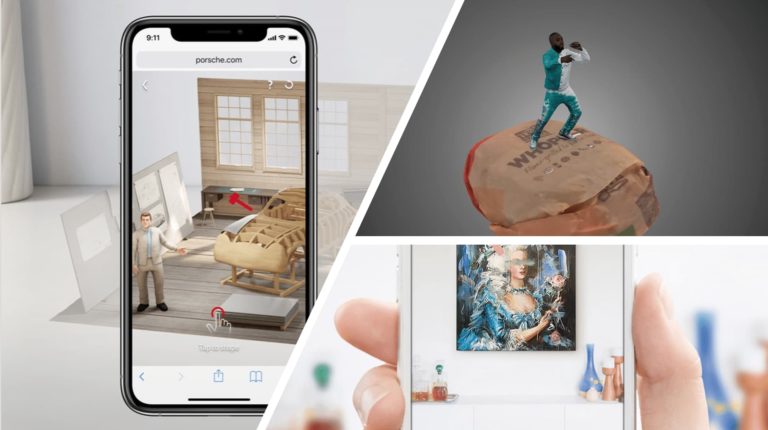
There’s a growing realization that apps aren’t always the optimal vessel for AR. Yet with mobile AR, it’s born on a device where apps rule. 90 percent of mobile users’ time is spent in apps versus the web. Can AR break that cycle? And if so, could web AR be the answer?
As background, Web AR resides within the mobile browser. Advantages include dynamism for AR’s serendipity and short sessions, versus the friction of app stores and downloads. The latter’s “activation energy” dampens AR adoption, which is already challenged to begin with.
For example, will consumers spend 90 seconds downloading an app for an experience that lasts 30 seconds? Consider this in light of dynamic AR activations within a store aisle or social context. These scenarios happen fast and need an AR delivery system that can align with that.
To synthesize web AR dynamics, specifically in the context of AR ads, Awe Nite recently held a virtual event with a panel of heavy hitters. We’re featuring it for this week’s XR Talks. In fact, the discussion was so robust that we’re breaking it into two parts. See part I takeaways below.

Numbers Game
One of Web AR’s benefits is its potential reach. Because of mobile platform fragmentation, developers and marketers that are building app-based ads and experiences must choose a lane….or jump through hoops to develop experiences that can be distributed across platforms.
The web is conversely operable across all smartphones. According to NexTech’s Paul Duffy, this allows for the widest aperture of devices that a given AR ad campaign can reach. Though there can be functional drawbacks, reach is more important to prioritize in many cases.
Beyond the accessibility of the browser, web AR campaigns are portable so marketers can execute the much-vaunted “omnichannel” approach. When a campaign lives on the web, it can be opened with a link, and therefore distributed to other channels, versus confined to one app.
This cross-channel ability taps into an AR advertising success factor that we’ve examined in the past: amortization. In other words, the cost and time to produce campaigns can be spread across additional distribution channels. That includes everything from product packaging to SMS.
Workarounds
Back to AR’s functional drawbacks, it’s true that browser-based AR experiences are inferior in some ways to apps. The latter can better utilize native libraries for tighter integration with device hardware and processing. But web AR continues to gain ground in its functional depth.
Moreover, Web AR can perform well when campaigns are built around the medium’s attributes. Rock Paper Reality’s Patrick Johnson advises minimizing file sizes and aiming for an overall compelling user experience, rather than graphical richness (if campaign goals align).
It’s also important in early days of AR’s cultural acclimation to guide users in explicit ways and hold their hands, even if it weighs down the experience from a design perspective. This includes graphical instructions about how to localize a device with plane detection markers.
When this is done right, campaigns can sidestep some of Web AR’s functional constraints. And the ultimate goal shouldn’t be design awards and impressing other AR people, but rather user utility and advertiser ROI. The latter can already be seen through Web AR’s conversion metrics.
Lifecycle
Drilling down on conversions, XR futurist and author Kathy Hackl stresses AR’s performance benefits. This comes in a few flavors including boosting conversions, basket sizes and dwell time. Saatchi Art’s Wayne Chang reports that it achieved 4X deltas in AR campaign conversions.
These and other proof points for web AR campaign performance speak for themselves. In that sense, it’s only a matter of time before brand managers try AR on a wider scale says Duffy, and discover its merits for themselves. This could lead to AR marketing’s eventual tipping point.
But AR isn’t a silver bullet. Though it continues to broaden into new product categories (even pet food supplements says Duffy), Johnson says that it shines today in a few specific areas. One example is commodities that differentiate mostly on marketing (think: Budweiser versus Coors).
Lastly, there will be an AR lifecycle. Polyform Studios’ Adam Wilson argues that — just like the smartphone era — there will be a limited shelf life for novelty experiences. True utility, such as virtually trying on fashion items, will be the AR design target that wins in the long term.
We’ll pick it up there in Part II of this series that will go deeper on Web AR campaign tactics from the panel. Meanwhile, see the full panel discussion below.
Editor’s Note: The author of this article owns stock in NextTech AR Solutions. See AR Insider’s disclosure and ethics policy here.

